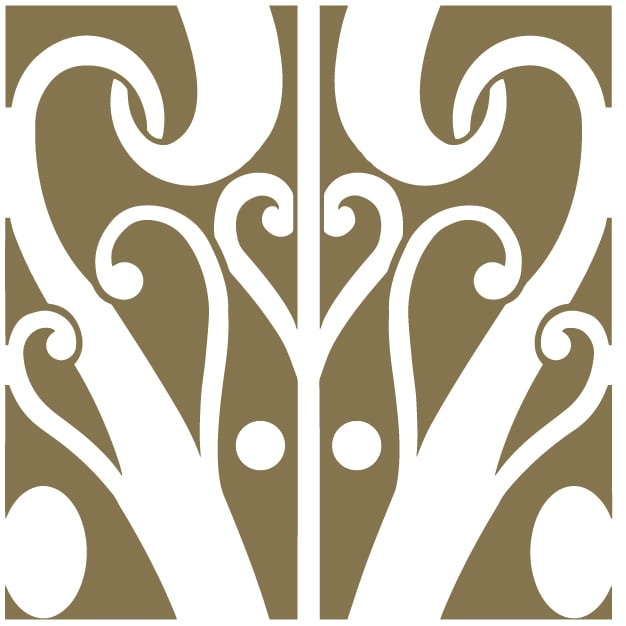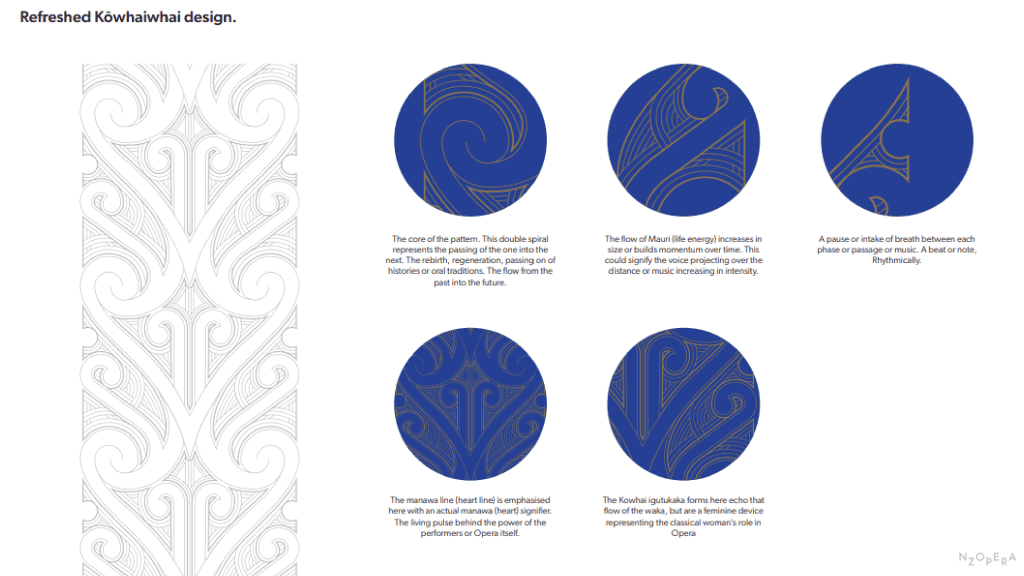
Kōwhaiwhai is the word used to describe the decoration, most commonly seen on the rafter patterns in the whare tipuna (meeting house). It also refers to the lattice work and paintings. They are designed especially to tell the stories and history of the iwi (tribe) they belong to.
The seed of our pattern started with a drawing by James Paratii Lainchbury (Ngā Toi Kauaerunga Studio) inspired by the Ngaru design which is a derivative from the koru which we all know symbolises new life, growth, strength and peace. The koru shape also conveys ‘perpetual movement’ while the inner coil suggests returning to the point of origin.
The Ngaru design is a repeating panel and represents the pattern the ocean waves make as the waka travels through the water. James found this to be fitting for NZ Opera in that we each hold an oar that moves the ship and together we make the pattern.
James Paratii Lainchbury designed the Kowhaiwhai for NZ Opera and we are proud and honoured to have this versatile design that reflects the uniqueness of our company and all the people that exist within the opera community. Here is a breakdown of the meanings of the motifs within the pattern.
